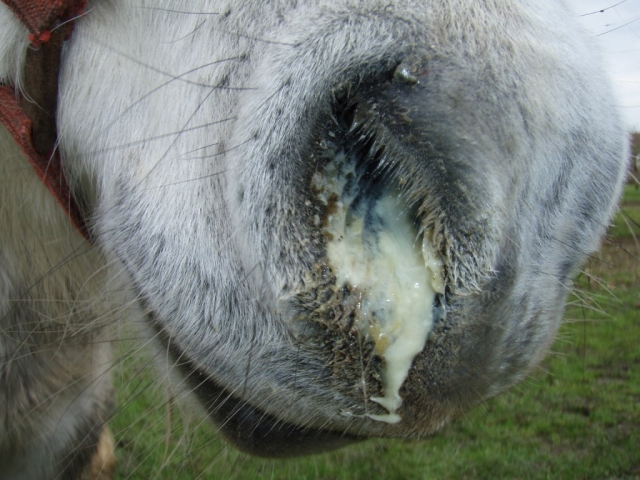
Strangles: A Pathogenic Legacy Of The War Horse
Thursday 30 July
Strangles: A pathogenic legacy of the war horse
In the largest study ever conducted into Streptococcus equi (S. equi), the bacteria responsible for the development of strangles, experts have come one step closer to designing an effective vaccine to prevent this devastating disease.
Strangles is characterised by a fever followed by abscesses of the lymph nodes of the head and neck. Despite over 100 years of research, the disease remains the most frequently diagnosed infection of horses worldwide. In new research, scientists from the Animal Health Trust, the Wellcome Trust Sanger Institute and the University of St. Andrews joined forces to examine the history and evolution of the disease.
The researchers examined 224 samples of S. equi procured from horses around the globe to try and find a common bacterial ancestor from which modern strains would have developed. Despite the disease first being described in 1251, the researchers were surprised at the genetic similarity of the samples and identified a total population replacement at the 19th or early 20th century. This corresponds to a period when horses from around the world were brought together in global conflicts including World War I, where an estimated eight million horses died on the battlefield.
“The mobilisation and mixing of horses in conflicts such as WWI provided perfect conditions for S. equi to thrive,” says Dr Simon Harris from the Wellcome Trust Sanger Institute. This combined with high mortality rates among the horses and their replacement with young susceptible horses could explain what we see around the world today.
While loss of diversity could be considered detrimental to bacterial populations, S. equi still infects more than 20,000 horses in the UK alone each year. Its success, researchers believe, is due to its ability to persist in some horses for years after they have recovered from strangles, where the bug can evolve to evade the horse’s immune system.
Dr Andrew Waller, Head of Bacteriology at the Animal Health Trust says, “The data we have gathered in this study has enabled us to pinpoint the genes that help the bacteria to persist, spread and thrive in the horse population. This research provides an unprecedented opportunity to reduce the impact of and prevent strangles in future generations of horses.”
The ability of S. equi to adapt to living in a persistent state within its host and still infect new horses mirrors the situation with HIV and the bacteria that causes tuberculosis in humans. “Unravelling the complex population dynamics of S. equi sheds new light on the balancing act between acute and persistent infection that is going on in many pathogens,” says Dr Matthew Holden from the Wellcome Trust Sanger Institute and the University of St Andrews. “Not only does this collection of whole-genome sequences for S. equi offer hope for an effective strangles vaccine, it also provides us with a useful model for understanding persistent infection in humans.”
More from Animal Health Trust

 9 years ago
9 years ago  1679 views
1679 views

 3 days ago
3 days ago